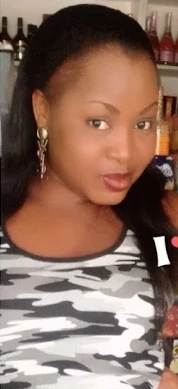The Congress first met in Philadelphia on September 5, 1774, with delegates from every one of the 13 colonies, except Georgia. On October 20, the Congress adopted the Articles of Association, which stated that if the Intolerable Acts were not repealed by December 1, 1774, a boycott of British goods would begin in the colonies. The Articles also outlined plans for an embargo on exports if the Intolerable Acts were not repealed before September 10, 1775.
On October 21, the delegates approved separate addresses for the people of Great Britain, and the North American colonies, both explaining the colonial position, and on October 26 a similar address was approved for the people of Quebec.
Also, on October 26, the delegates drafted a formal petition to British King George III, which outlined the colonists’ grievances. Many delegates were skeptical about changing the king’s attitude towards the colonies, but believed that every opportunity should be exhausted to de-escalate the conflict before more radical steps were taken. They did not draft such a letter to the British Parliament as the colonists viewed it as the aggressor behind the recent Intolerable Acts. Lastly, not fully expecting the standoff in Massachusetts to explode into full-scale war, the Congress agreed to reconvene in Philadelphia on May 10, 1775.
By the time Congress met again, war was already underway, and thus the delegates to the Second Continental Congress formed the Continental army and dispatched George Washington to Massachusetts as its commander. Meanwhile, Congress drafted the Olive Branch Petition to King George III, which attempted to suggest means of resolving disputes between the colonies and Great Britain. Congress sent the petition on July 8, but George III refused to receive it.
As British authority crumbled in the colonies, the Continental Congress effectively took over as the de facto national government, thereby exceeding the initial authority granted to it by the individual colonial governments. However, the local groups that had sprung up to enforce the colonial boycott continued to support the Congress. The Second Congress continued to meet until the Articles of Confederation that established a new national government for the United States took effect on March 1, 1781.
As the de facto national government, the Continental Congress assumed the role of negotiating diplomatic agreements with foreign nations. As the war progressed, the British Parliament banned trade with the colonies and authorized the seizure of colonial vessels on December 23, which served to further erode anti-independence moderates’ positions in Congress and bolster pro-independence leaders. Congress responded by opening American ports to all foreign ships except British ones on April 6, 1776. Reports from American agent Arthur Lee in London also served to support the revolutionary cause. Lee’s reports suggested that France was interested in assisting the colonies in their fight against Great Britain.
With a peaceful resolution increasingly unlikely in 1775, Congress began to explore other diplomatic channels and dispatched Silas Deane to France in April of 1776.
Congress and the British government made further attempts to reconcile, but negotiations failed when Congress refused to revoke the Declaration of Independence, both in a meeting on September 11, 1776 with British Admiral Richard Howe, and when a peace delegation from Parliament arrived in Philadelphia in 1778. Instead, Congress spelled out terms for peace on August 14, 1779, which demanded British withdrawal, American independence, and navigation rights on the Mississippi River. The next month John Adams was appointed to negotiate such terms with England, where British officials did their best to avoid him.
Formal peace negotiations would have to wait until after the Confederation Congress took over the reins of government on March 1, 1781, following American victories at Yorktown that resulted in British willingness to end the war.


















Thank you for reaching out to us. We are happy to receive your opinion and request. If you need advert or sponsored post, We’re excited you’re considering advertising or sponsoring a post on our blog. Your support is what keeps us going. With the current trend, it’s very obvious content marketing is the way to go. Banner advertising and trying to get customers through Google Adwords may get you customers but it has been proven beyond doubt that Content Marketing has more lasting benefits.
We offer majorly two types of advertising:
1. Sponsored Posts: If you are really interested in publishing a sponsored post or a press release, video content, advertorial or any other kind of sponsored post, then you are at the right place.
WHAT KIND OF SPONSORED POSTS DO WE ACCEPT?
Generally, a sponsored post can be any of the following:
Press release
Advertorial
Video content
Article
Interview
This kind of post is usually written to promote you or your business. However, we do prefer posts that naturally flow with the site’s general content. This means we can also promote artists, songs, cosmetic products and things that you love of all products or services.
DURATION & BONUSES
Every sponsored article will remain live on the site as long as this website exists. The duration is indefinite! Again, we will share your post on our social media channels and our email subscribers too will get to read your article. You’re exposing your article to our: Twitter followers, Facebook fans and other social networks.
We will also try as much as possible to optimize your post for search engines as well.
Submission of Materials : Sponsored post should be well written in English language and all materials must be delivered via electronic medium. All sponsored posts must be delivered via electronic version, either on disk or e-mail on Microsoft Word unless otherwise noted.
PRICING
The price largely depends on if you’re writing the content or we’re to do that. But if your are writing the content, it is $100 per article.
2. Banner Advertising: We also offer banner advertising in various sizes and of course, our prices are flexible. you may choose to for the weekly rate or simply buy your desired number of impressions.
Technical Details And Pricing
Banner Size 300 X 250 pixels : Appears on the home page and below all pages on the site.
Banner Size 728 X 90 pixels: Appears on the top right Corner of the homepage and all pages on the site.
Large rectangle Banner Size (336x280) : Appears on the home page and below all pages on the site.
Small square (200x200) : Appears on the right side of the home page and all pages on the site.
Half page (300x600) : Appears on the right side of the home page and all pages on the site.
Portrait (300x1050) : Appears on the right side of the home page and all pages on the site.
Billboard (970x250) : Appears on the home page.
Submission of Materials : Banner ads can be in jpeg, jpg and gif format. All materials must be deliverd via electronic medium. All ads must be delivered via electronic version, either on disk or e-mail in the ordered pixel dimensions unless otherwise noted.
For advertising offers, send an email with your name,company, website, country and advert or sponsored post you want to appear on our website to advert @ alexa. ng
Normally, we should respond within 48 hours.